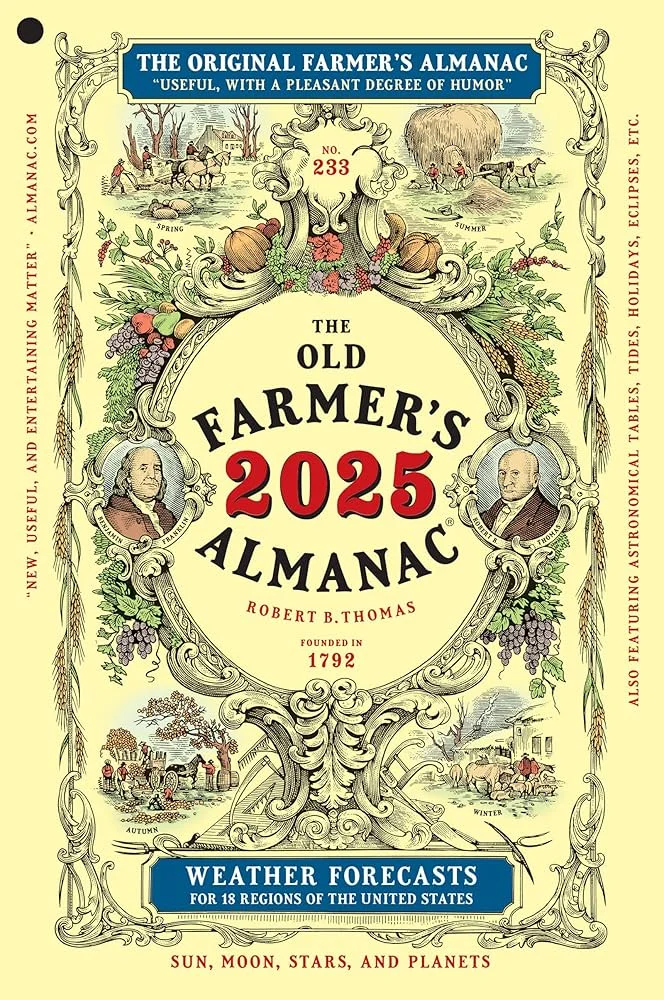Farmers' Almanac Sunset: A 200-Year Forecast Failure?
The End of an Era (and a Business Model)
The Farmers’ Almanac, a publication that’s been around since 1818, is calling it quits. The final edition will be for 2026, after which both print and online versions will cease. The staff announced the decision on November 6, citing financial challenges. Access to existing digital content will disappear in December 2025. You can still grab a copy of the 2026 edition at FarmersAlmanac.com, Amazon, and retail stores.
Let's be clear: 200 years is a good run. Longevity, however, doesn't guarantee continued relevance or profitability. The Almanac provided weather forecasts, gardening tips, home tips, and stargazing information. It also included moon phases and a "Best Days" calendar for gardening, fishing, and more. The question is, did it provide any of that well?
The immediate reaction was… confusion. The Old Farmer's Almanac (note the crucial difference in name) felt compelled to issue a statement on November 7 clarifying that they are not ceasing publication. This suggests a significant overlap in readership and a potential brand recognition problem for the Farmers' Almanac. A Farmer’s Almanac is going away forever, but which one? What to know - Cincinnati Enquirer
Forecasting the Decline
The Farmers' Almanac predicted weather for seven U.S. and five Canadian climatological regions. The Old Farmer's Almanac, in contrast, predicts weather for 18 regions in the United States and seven in Canada. Right off the bat, the Farmers' Almanac had less granular coverage.

And this is the crux of the issue, isn't it? In a world drowning in data, in an era where hyper-local weather forecasts are available on your phone every five minutes, what unique value did the Farmers' Almanac provide? Gardening tips? Those are available on countless websites, often for free. Stargazing information? Ditto. The "Best Days" calendar? That's where things get interesting.
The Almanac predicted the best days to fish, wean animals, plant crops, and set eggs. This harkens back to a pre-industrial, agrarian society where such knowledge was crucial. But in 2024, how many people are seriously relying on the Farmers' Almanac to determine when to wean their animals? (I'm genuinely curious what that number is.) This isn’t about providing a service; it’s about selling a feeling of connection to a simpler past.
That's not to say there's no value in tradition or nostalgia. But nostalgia doesn't pay the bills. Geiger, a Lewiston, Maine company, printed and distributed the Farmers' Almanac. Yankee Publishing Inc. in Dublin, New Hampshire, handles the Old Farmer's Almanac. We don't have the financials for either company, but the Farmers' Almanac's closure speaks volumes.
The numbers tell a story of a business model that failed to adapt. While the Old Farmer's Almanac continues, the Farmers' Almanac fades into history. Both publications leveraged a similar approach – long-range weather predictions and folksy advice – but the Farmers' Almanac simply couldn't compete. It's like comparing Blockbuster to Netflix; both offered movie rentals, but one failed to innovate.
The decision to discontinue access to existing digital content in December 2025 seems short-sighted. Why not keep the website running as an archive? (Perhaps the hosting costs outweigh the potential revenue from the few remaining users?) It would at least preserve the legacy.
The Data Was Always There
So, was this a 200-year forecast failure? Not in the literal sense, of course. They weren't predicting their own demise. But perhaps they should have been. The signs were likely there for years – declining subscription rates, increasing competition from digital sources, a slow but steady erosion of relevance. The Farmers' Almanac provided forecasts for the weather, but seemingly failed to forecast its own business climate. And maybe, just maybe, the irony is the whole point.
